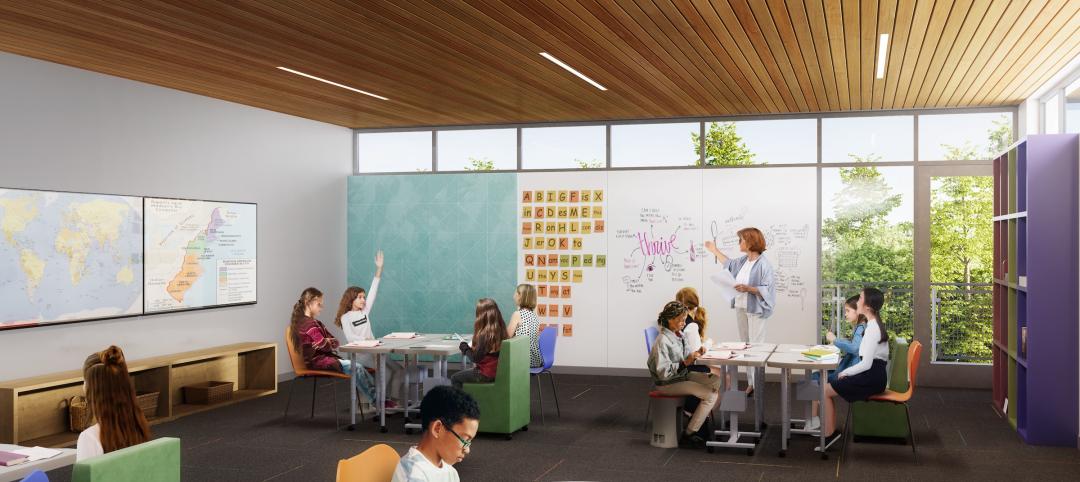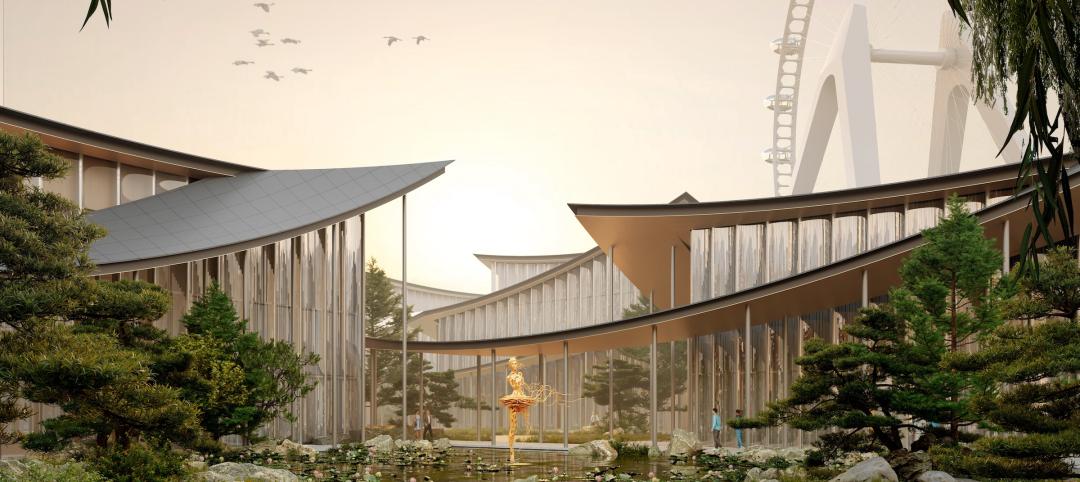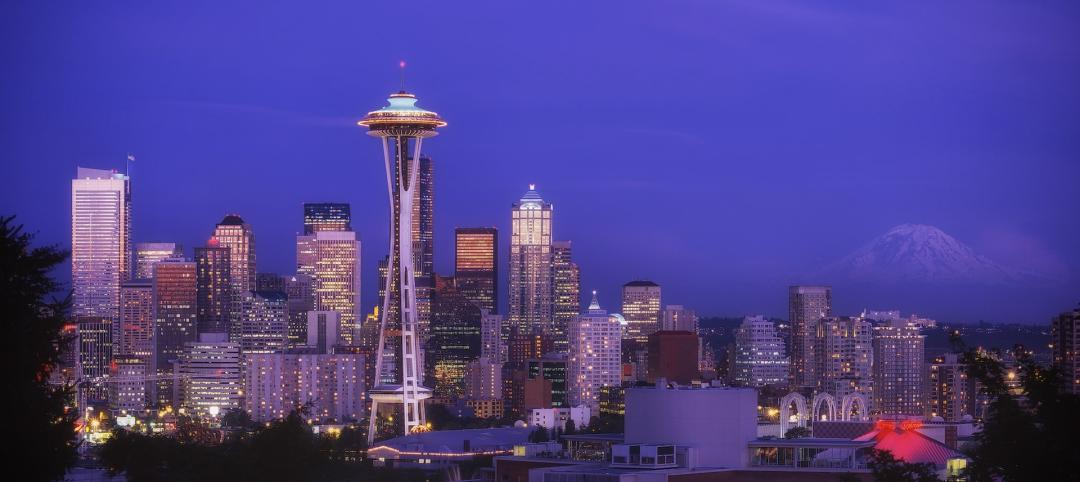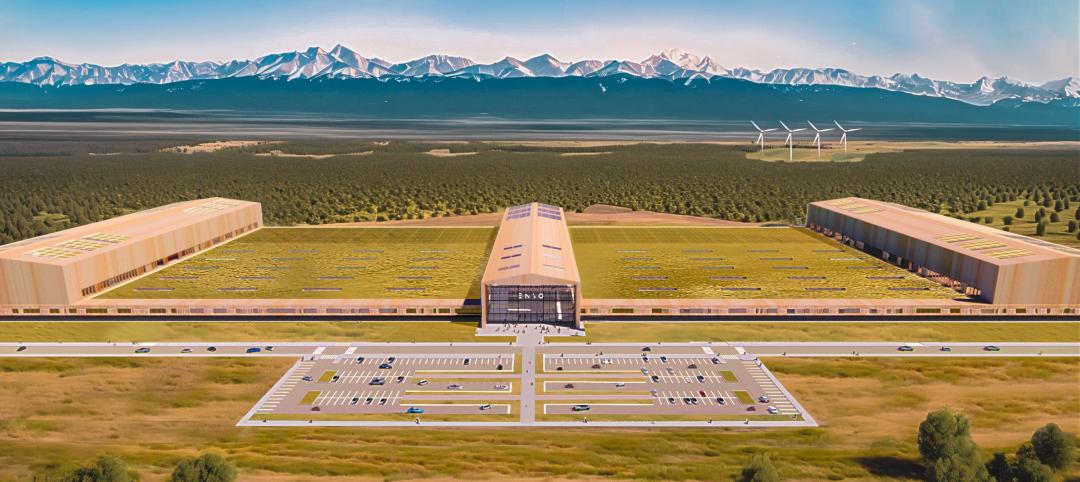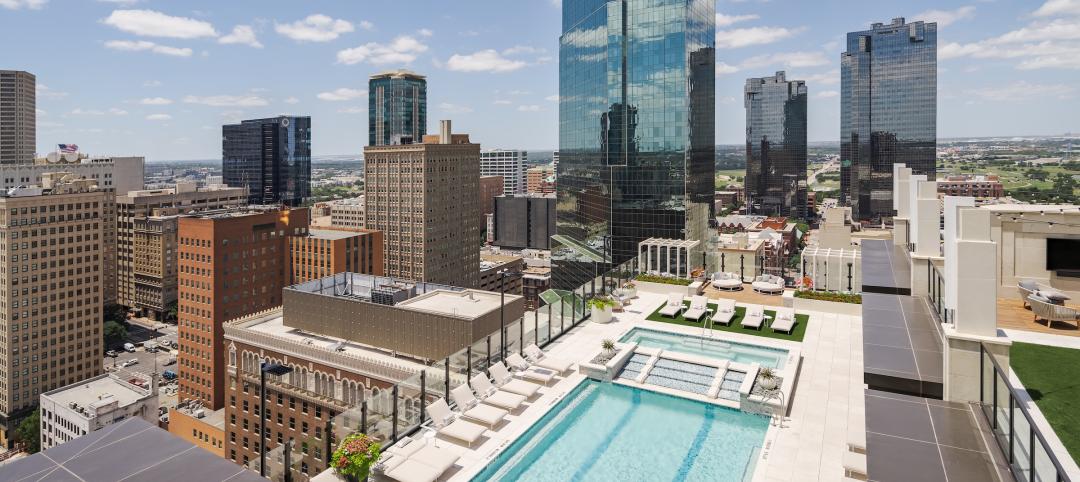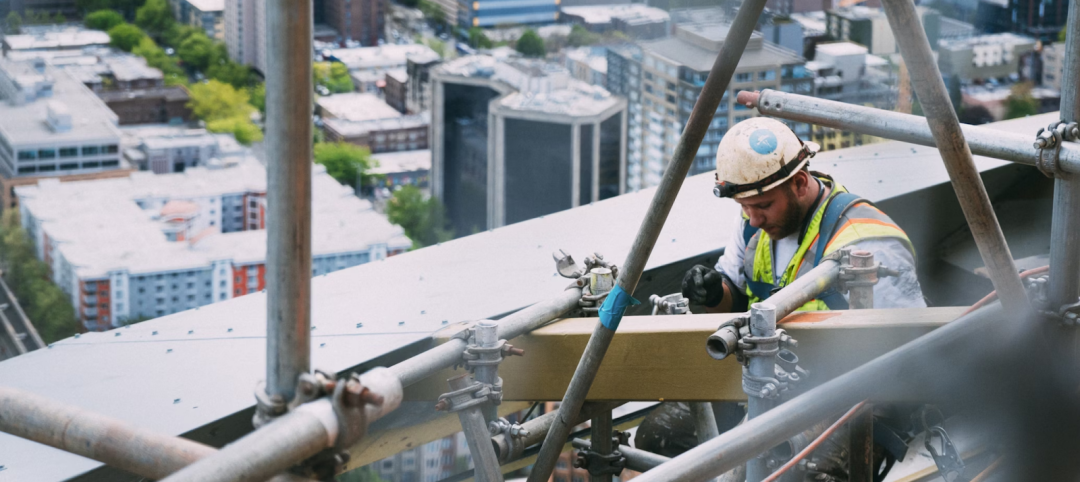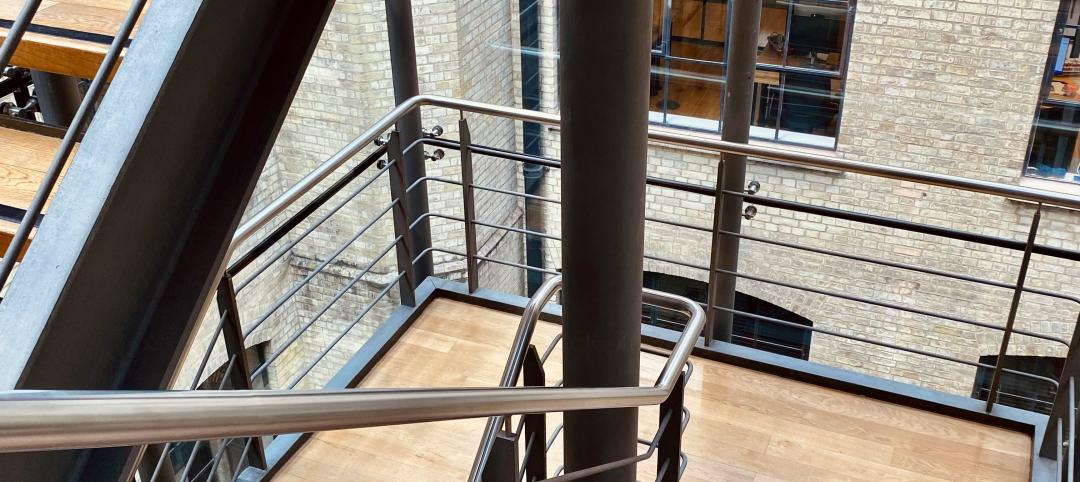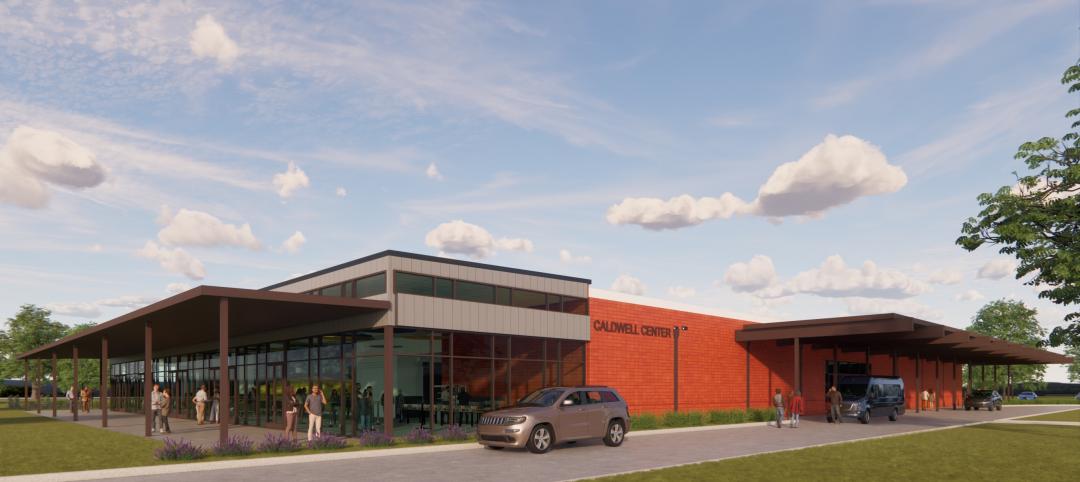Soaring to a height of 1,776 feet (540-meter), the 2.6-million-sf (242,000-square-meter) building soon to become the new One World Trade Center in the lower Manhattan district of New York City is a marvel of design and engineering. Construction of the building, previously dubbed the Freedom Tower, began in April 2006 and, when it is completed in 2013, it will be the tallest building in the U.S.
The building will feature an expansive public lobby, a series of mechanical floors, followed by 69 office floors that will include two television broadcast floors, mechanical floors and two restaurants. There will be an observation deck and parapet above these floors, and at the crown, a communications platform and a 408-foot (125-meter), cable-stayed antenna. Below-ground, concourses will offer 55,000-sf (5,100 square-meters) of retail space.
Sustainable design is central to One World Trade Center's development, integrating renewable energy, interior daylighting, reuse of rainwater and of recycled construction debris and materials. But one of the most sustainable elements of the structure is so integral to the mammoth skyscraper’s strength and durability that it might surprise you.
Concrete
The structural columns of One World Trade Center are comprised of steel and concrete. The compressive strength of concrete for these columns is divided into four phases starting at 14,000 psi (97 MPa) at the bottom of the building, and progressing through 12,000 psi (83 MPa), 10,000 psi (69 MPa) and 8,600 psi (59 MPa) to the top. The 12,000 psi (83 MPa) concrete phase of the project was extremely challenging, with the engineers, owners and contractors all having their own requirements and specifications.
Engineering requirements:
- Compressive strength: 12,000 psi (83 MPa) @ 56 days
- Over-design for safety: 1,900 psi (13 MPa)
- Modulus of elasticity: 7.0 million psi (48 GPa)
- Heat of hydration: Not to exceed 160 OF (70 OC)
- Non-air-entrained
Port Authority of New York/New Jersey:
- Quantity of portland cement in the mixture: Less than 400 lb/yd3 (240 kg/m3)
Contractor requirements:
- Slump flow: 22 – 26 inches (560 - 660 mm)
- Ability to pump to at least 40 floors
- No loss in concrete workability during transit and placement
- Aesthetically pleasing
To achieve the desired concrete properties, concrete producer Eastern Concrete Materials, Elmwood Park, N.J. and admixture supplier BASF Construction Chemicals, Beachwood, Ohio, partnered to develop a special high-strength, sustainable concrete mixture. This mixture was used for the 38,000 yd3 (29,000 m3) of concrete needed for the columns through the first 40 floors.
One of the biggest challenges in developing this concrete mixture was meeting the Port Authority of New York/New Jersey’s strict requirement for the replacement of cement. Through BASF’s Green Sense Concrete mixture optimization service, Eastern Concrete Materials was able to proportion a concrete mixture that met this requirement and allowed for the use of high levels of recycled materials. The mixture substantially replaced portland cement with the recycled materials, as well as silica fume, non-cementitious fillers and Glenium high-range water-reducing admixtures to exceed all the performance targets specified by the One World Trade Center project stakeholders.
To determine the environmental impact, an Eco-Efficiency Analysis of the concrete mixture was conducted, using a methodology validated by NSF International, to compare the specialized Green Sense Concrete mixture to a reference mixture. The results of this cradle-to-gate analyses included fresh water savings of 30,492 gallons (115,400 liters), energy savings of over 8 million kWh, air emissions savings of 12 million lb (5445 tonnes) of CO2, solid emissions savings of over 400,000 lb (180 tonnes) and fossil fuel savings of 750,000 lb (340 tonnes).
“We are extremely proud to be part of this historic and iconic project,” said John Salvatore, Head of BASF Construction Chemicals Americas. “But we are especially proud of the collaboration and innovation that was brought to bear in order to make a significant contribution to the enhanced sustainability of One World Trade Center.”
For more on innovative admixtures, click here to visit BASF Admixture Systems. +
Related Stories
K-12 Schools | Aug 29, 2024
Designing for dyslexia: How architecture can address neurodiversity in K-12 schools
Architects play a critical role in designing school environments that support students with learning differences, particularly dyslexia, by enhancing social and emotional competence and physical comfort. Effective design principles not only benefit students with dyslexia but also improve the learning experience for all students and faculty. This article explores how key design strategies at the campus, classroom, and individual levels can foster confidence, comfort, and resilience, thereby optimizing educational outcomes for students with dyslexia and other learning differences.
Museums | Aug 29, 2024
Bjarke Ingels' Suzhou Museum of Contemporary Art conceived as village of 12 pavilions
The 60,000-sm Suzhou Museum of Contemporary Art in Suzhou, Jiangsu, China recently topped out. Designed by Bjarke Ingels Group (BIG), the museum is conceived as a village of 12 pavilions, offering a modern interpretation of the elements that have defined the city’s urbanism, architecture, and landscape for centuries.
Adaptive Reuse | Aug 28, 2024
Cities in Washington State will offer tax breaks for office-to-residential conversions
A law passed earlier this year by the Washington State Legislature allows developers to defer sales and use taxes if they convert existing structures, including office buildings, into affordable housing.
Industrial Facilities | Aug 28, 2024
UK-based tire company plans to build the first carbon-neutral tire factory in the U.S.
ENSO, a U.K.-based company that makes tires for electric vehicles, has announced plans to build the first carbon-neutral tire factory in the U.S. The $500 million ENSO technology campus will be powered entirely by renewable energy. The first-of-its-kind tire factory aims to be carbon neutral without purchased offsets, using carbon-neutral raw materials and building materials.
Architects | Aug 28, 2024
KTGY acquires residential high-rise specialist GDA Architects
KTGY, an award-winning design firm focused on architecture, interior design, branded environments and urban design, announced that it has acquired GDA Architects, a Dallas-based architectural firm specializing in high rise residential, hospitality and industrial design.
K-12 Schools | Aug 26, 2024
Windows in K-12 classrooms provide opportunities, not distractions
On a knee-jerk level, a window seems like a built-in distraction, guaranteed to promote wandering minds in any classroom or workspace. Yet, a steady stream of studies has found the opposite to be true.
Building Technology | Aug 23, 2024
Top-down construction: Streamlining the building process | BD+C
Learn why top-down construction is becoming popular again for urban projects and how it can benefit your construction process in this comprehensive blog.
Airports | Aug 22, 2024
Portland opens $2 billion mass timber expansion and renovation to its international airport
This month, the Portland International Airport (PDX) main terminal expansion opened to passengers. Designed by ZGF for the Port of Portland, the 1 million-sf project doubles the capacity of PDX and enables the airport to welcome 35 million passengers per year by 2045.
Adaptive Reuse | Aug 22, 2024
6 key fire and life safety considerations for office-to-residential conversions
Office-to-residential conversions may be fraught with fire and life safety challenges, from egress requirements to fire protection system gaps. Here are six important considerations to consider.
Resiliency | Aug 22, 2024
Austin area evacuation center will double as events venue
A new 45,000 sf FEMA-operated evacuation shelter in the Greater Austin metropolitan area will begin construction this fall. The center will be available to house people in the event of a disaster such as a major hurricane and double as an events venue when not needed for emergency shelter.


